Ipomoea hederifolia
(Scarlet Morning Glory)
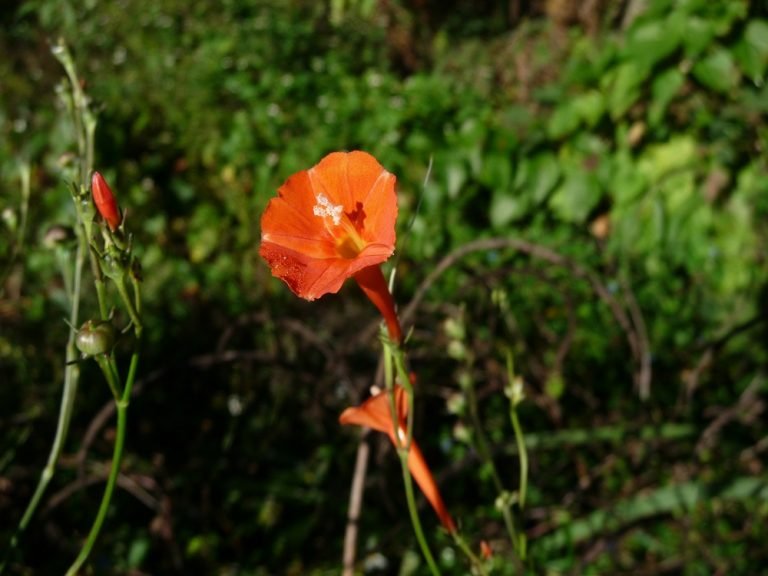
Common Names, Latin Name, and Family
The common names it goes by are scarlet morning glory, scarlet creeper, star ipomoea, trompillo and ivy-leaved morning glory
Its Latin name is Ipomoea hederifolia.
It is a vine in the Convolvulaceae, or morning-glory, family.
Ipomoea coccinea and Quamoclit coccinea are two synonyms for this particular plant.
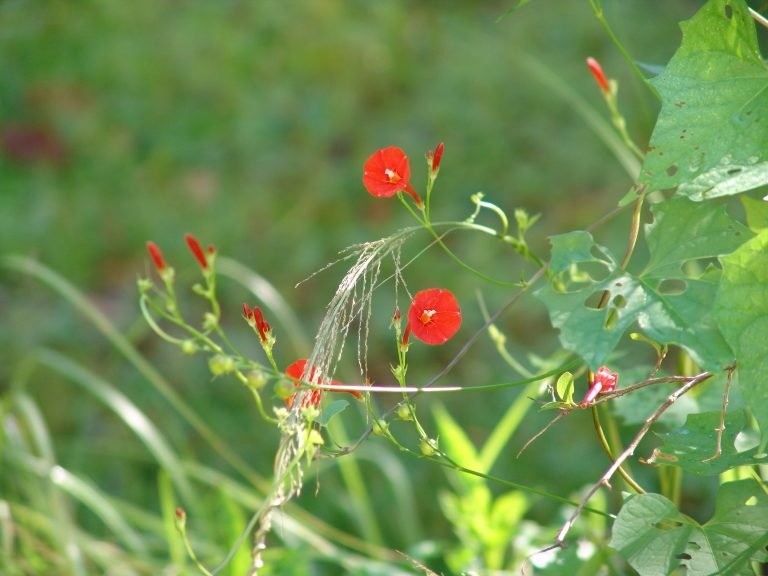
Form
This native, annual, vine typically climbs upward, or outward, onto nearby vegetation.
If allowed to grow near an existing tree or other support it will climb to well over twenty feet, however, if not supported it will grow along the ground forming a beautiful tangle of foliage and flowers.
Leaves
The leaves are alternate.
The leaf shape is variable, but most are heart-shaped with three deep lobes that are pointed at the tips (apices).
Leaf sizes can vary from 1 to 4 inches in length. Some leaves may have toothed margins, while others may not.
The leaves, stalks, and stems are generally smooth.
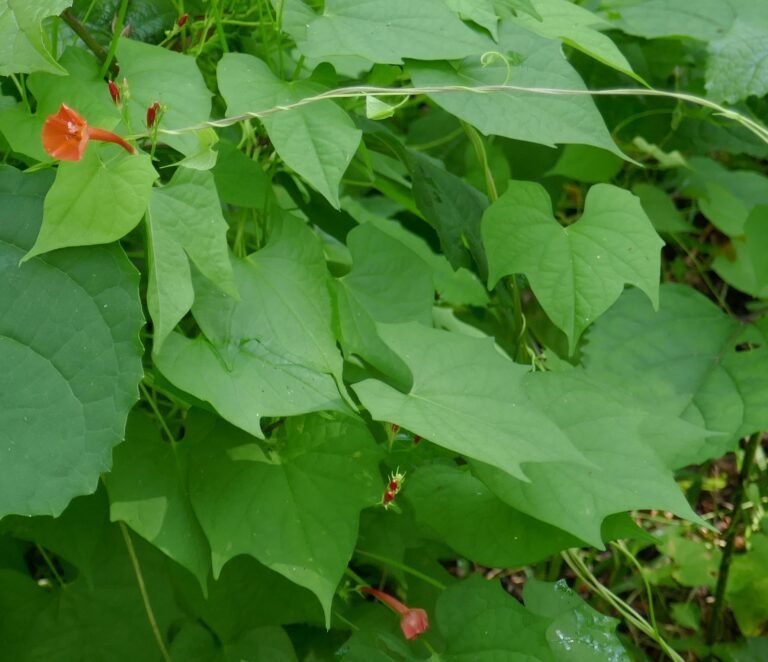
Flowers
The flowers are tiny and trumpet shaped with long slender necks. They are a brilliant reddish orange in color. They open in the morning and by mid day the delicate petals collapse from the heat.

Fruit / Seeds
Quarter inch round seedpods appear throughout the summer and fall along with the flowers.
They contain four cells with each cell containing a seed.
They turn dark brown when dry enough to collect and store for later use.
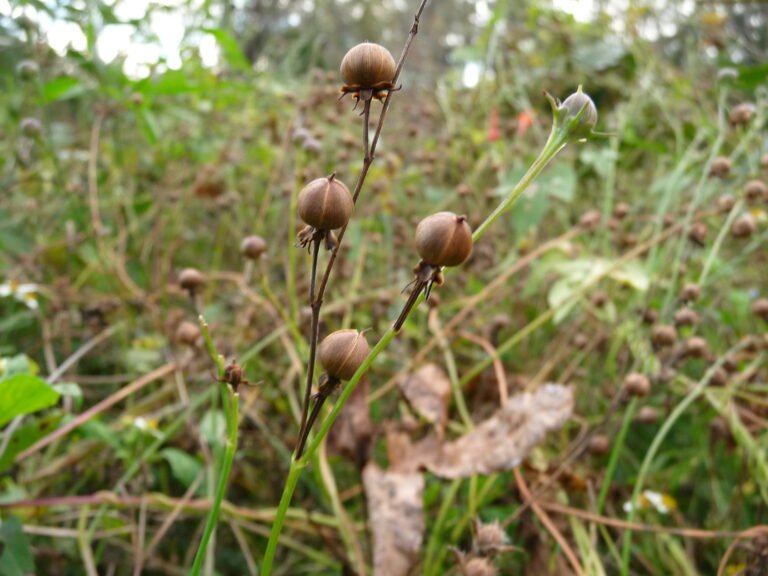
Habitat
Scarlet morning glory occurs mostly in disturbed sites but can also be found in hammocks, thickets, roadsides, and fields.
Native Range
Scarlet morning glory is native to Florida, southern Georgia, west Texas and north to Massachusetts.
It also occurs in Mexico and the West Indies.
Landscape Use
Scarlet morning glory prefers full sun, average moisture, and rich soil.
It will tolerate shadier, drier, and sandier conditions, but will not flower as profusely and will show some yellowing of the leaves.
Many gardeners consider the morning glory to be a weed, but I have found them to be one of the most carefree and attractive plants providing color in the landscape and food for wildlife, and therefore, is one of my favorites.
It is a very light and delicate vine that will not damage the tree or plant it is using for support. I personally grow them at the base of most of my trees that have low branches and are open enough for the vine to get enough light.

Wildlife Use
The flowers are a nectar source for a variety of pollinators including hummingbirds and butterflies.
The dried seeds are eaten by songbirds. The Northern cardinals seem to be especially fond of them.
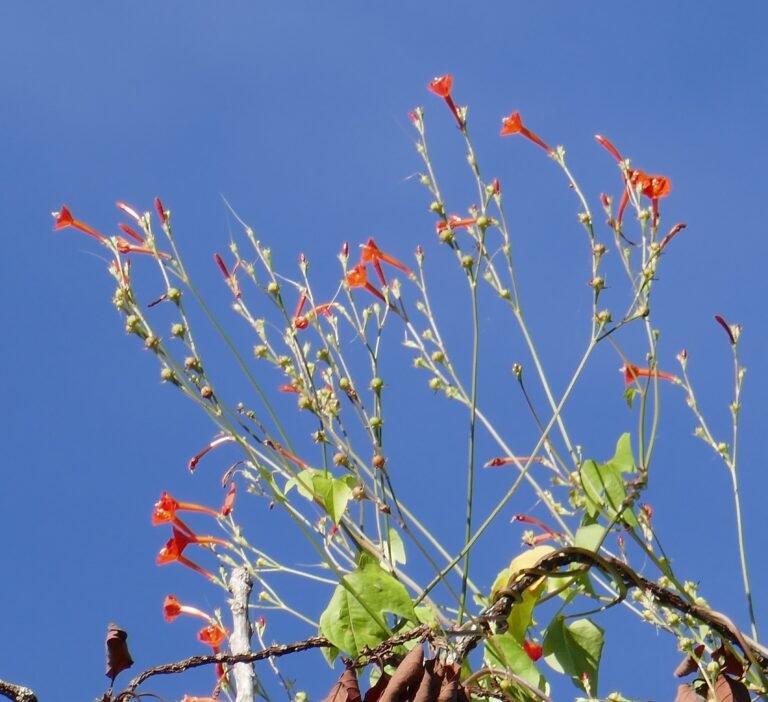
Propagation
Scarlet morning glory needs to be grown from seed since it is an annual. However if you find seedling volunteers they can be transplanted if you are very delicate with moving them and do not damage the roots.
Once you get a vine growing it will drop seeds from the original plant and will thrive where it was originally planted year after year without any human interference whatsoever.
Buy Florida ecotype scarlet morning glory seeds at my Ebay store … click here.
References:
Bell, C. Ritchie and B. J. Taylor. Florida Wildflowers and Roadside Plants. Laurel Hill Press: Chapel Hill, NC. 1982
Hall, David W. Illustrated Plants of Florida and the Coastal Plain. Maupin House Publishing: Gainesville, FL. 1993
Taylor, Walter Kingsley. The Guide to Florida Wildflowers. Taylor Publishing: Dallas, TX 1992
Wunderlin, Richard P. Guide to the Vascular Plants of Florida. University Press of Florida: Gainesville, FL. 1998
The above links go directly to Amazon and if you purchase through the link I will receive a small commission as an Amazon Associate, and I thank you in advance for your support.
You Might Also Like: Spurred Butterfly Pea
